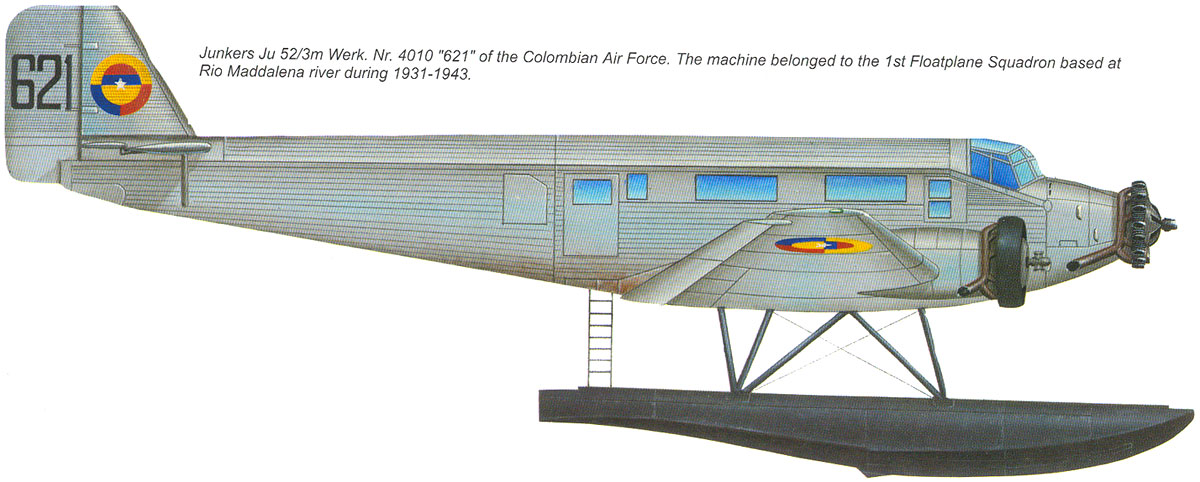
Peru & Colombia: the Leticia Incident, 1932-1933
In a typical border incident, the South American nations of Peru and Colombia went to war in 1932 over a remote stretch of empty jungle. A long-standing border dispute was supposed to have been settled in March 1922, when Peru agreed to the transfer of 2,250 square miles of its territory on the Amazon to Colombia. This region, known as the “Leticia Trapezium,” included 68 miles of the northern bank of the Amazon; since rivers played the major part in South American communications and commerce, river access was always a major factor in relations between states. The treaty was unpopular with nationalist Peruvians; it was not ratified until 1927, and opposition to it continued to rumble into the 1930s. On August 31, 1932, resentment against the treaty turned to conflict when a group of Peruvian nationalists took the little town of Leticia with its 500-strong population, and ejected its six-man Colombian “garrison.”
To the Peruvian government’s surprise, the Colombians were unwilling to accept this occupation, and prepared for war. At the outbreak of the conflict both armies were about equal in size, with 8,400 Colombian troops and 8,955 Peruvians. Getting any of these troops to the isolated theater of war was extremely difficult, however, and the army with the better supply lines would win.
The Peruvian Army was better armed with machine guns and artillery, which included a few modern 20mm antiaircraft guns, but much of their weaponry, including rifles, dated from the early years of the century. The Peruvian force that was engaged during the Leticia Incident was estimated at 2,000 men, including large numbers of civilian volunteers; a number of regular Army officers were flown in to train and command these irregulars. The force began with four 75mm M1895 Krupp mountain guns, and efforts were made during the conflict to bring in more modern artillery from Lima. Initially Peru had the advantage in the air, with 60 Air Force and Navy aircraft, including Curtiss F11C Hawk and Vought 02U Corsair fighters, and acquired 16 others during the conflict.
The Colombian Army had about 32 ex-Austrian Schwarzlose heavy machine guns, some of which had had their water jackets removed. They also had a number of 75mm Skoda mountain guns and some modern 47mm Skoda antitank guns. At the start of the war the Colombians had 16 aircraft, but by the end they had acquired a further 82, largely civilian machines flown by mercenary pilots.
the Colombian Aviacion Militar used three upgraded Ju 52/1ms to ferry troops and supplies to a remote Amazonian region known as the Leticia quadrilateral or trapezium following a border clash with neighbouring Peru in 1932-33. Peruvian forces had occupied the key Colombian port of Leticia in what became known as the `Leticia Incident’ and the region stood on the brink of major conflict. Both the Colombians and the Peruvians needed reliable aircraft, ideally able to operate on water. The three converted 1ms were fitted with floats and flew equipment and supplies from Barranquilla. This time, however, in July 1933, the League of Nations managed to negotiate the return of Leticia and the surrounding area to Colombian control, thus averting a further escalation of the conflict.
Recognizing their lack of preparedness, the Colombians spent large sums on acquiring new equipment. This included several gunboats, which allowed them to get supplies up to their frontline troops via the river network. The effort of supplying the troops across vast distances of jungle country dominated the conduct of the campaign, and the Colombians’ superior organization gave them the advantage.
Since they had no military presence in the disputed territory, the Colombians were slow to react, and Peruvian regulars and irregulars made further advances beyond Leticia. They took the only other town in the disputed territory, Tarapaca, and then dug in to await a Colombian response. It took Colombia until December 1932 to muster the necessary ships at the mouth of the Amazon under Gen Alfredo Vasquez. The war proper only began in early 1933, when his 1,000-strong Colombian force was finally transported up the Putomayo River in six vessels. They arrived at Tarapaca on February 14, when they were unsuccessfully bombed by Peruvian aircraft. The next day the Colombians retook the town almost without bloodshed, and then moved towards the Peruvian stronghold of Gueppi, whose capture on March 27 effectively ended the war.
Coincidentally, on April 30, President Luis Miguel Sanchez of Peru was assassinated in Lima, and his successor handed the dispute over to the League of Nations, which negotiated a peace on May 24. Both sides had suffered only minimal battle casualties: the Peruvians had apparently lost 25 killed and the Colombians 27. However, the dangers of campaigning in the rainforest were confirmed by a later Peruvian admission that they had also lost 800 men who died of disease.